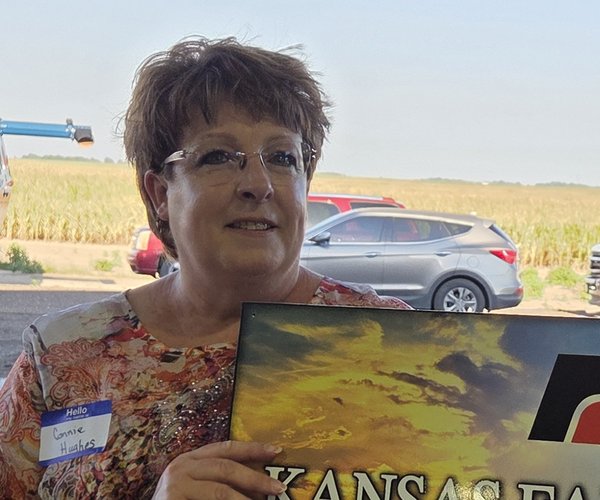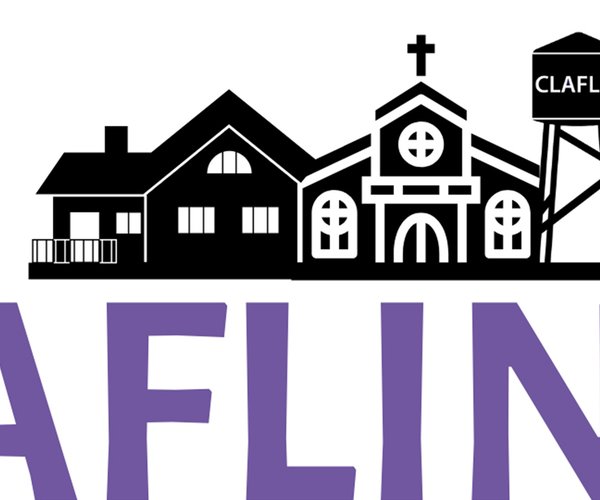TOPEKA – The Kansas Department of Health and Environment (KDHE) and the Kansas Department of Wildlife and Parks (KDWP) have issued a public health advisory due to blue-green algae.
Fossil Lake in Russell County was added to the warning list on Friday, August 22.
The water recreation season in Kansas officially runs from April 1 to Oct. 31, as do the Harmful Algae Blooms (HAB) response program’s active operations. Kansans should remain vigilant while engaging in activities taking place in or on the water, such as swimming, boating, and fishing.
A HAB may look like foam, scum or paint floating on the water and be colored blue, bright green, brown or red. Blooms can develop rapidly; if the water appears suspicious or there is decaying algae on the shore, avoid contact and keep dogs away. These toxins can be absorbed by ingestion, inhalation of aerosols and even skin contact. Symptoms vary depending upon the type of exposure (e.g., direct contact, ingestion, inhalation) but can include rash, vomiting, diarrhea, fever, sore throat, and headache.
If you, or your pets, come into contact with algae, rinse the area with clean, fresh water. Suspected HAB-related health incidents, whether human or animal, regardless of season, should be reported as soon as possible at kdhe.ks.gov/1163.
Active Advisories
Warning
• Atchison County Lake, Atchison County
• Augusta Santa Fe Lake, Butler County (Added August 22)
• Edgerton City Lake, Johnson County
• Fossil Lake, Russell County (Added August 22)
• Frazier Lake, Grant County
• Gathering Pond, Geary County
• Hodgeman State Fishing Lake, Hodgeman County
• King Lake, Lyon County
• Lake Afton, Sedgwick County
• Melvern Outlet River Pond, Osage County
• Peter Pan Park Pond (Elevated August 22)
• River Pond (Tuttle Creek State Park), Pottawatomie and Riley Counties (Elevated August 22)
• Wilderness Lake (Overland Park), Johnson County
• Wooster Lake, Lyon County (Elevated August 22)
Watch
• Atchison City Lake #9, Atchison County
• Atchison State Fishing Lake, Atchison County
• Eagle Lake (Bel Aire), Sedgwick County
• Lake Shawnee, Shawnee County
• Marion County Lake, Marion County
• Melvern Outlet Swim Pond, Osage County
• Mission Lake, Brown County (Added August 22)
• Ottawa State Fishing Lake, Ottawa County
• Rock Garden Pond, Shawnee County (Lowered August 22)
A Hazard status indicates that a HAB is present, and extreme conditions exist.
When a hazard is issued, KDHE recommends the following precautions be taken:
• Signage should be posted at all public access locations.
• It is recommended that either a portion of the lake or the entire lake or zone, be closed to the public.
• In some cases, the adjacent land should be closed as well. Actual setback distances will be determined on a site-specific basis, if necessary.
• In zoned lakes, if a lake zone is issued at a Hazard level, all other adjacent lake zones may be recommended for an advisory status dependent on lake conditions.
A Warning status indicates that a HAB is expected or present.
When a warning is issued, KDHE recommends the following precautions be taken:
• Signage should be posted at all public access locations.
• Inhalation of spray or aerosols may be harmful.
• Lake water is not safe to drink for pets or livestock.
• Lake water, regardless of blue-green algae status, should never be consumed by humans.
• Water contact should be avoided.
• Fish may be eaten if they are rinsed with clean water and only the fillet portion is consumed, while all other parts are discarded.
• Do not allow pets to eat dried algae.
• If lake water contacts skin, wash with clean water as soon as possible.
• Avoid areas of visible algae accumulation.
A Watch status means that a HAB is possible and may be present.
When a watch is issued, KDHE recommends the following precautions be taken:
• Signage should be posted at all public access locations.
• Water may be unsafe for humans/animals.
• Avoid areas of algae accumulation and do not let people/pets eat dried algae or drink contaminated water.
• Swimming, wading, skiing and jet skiing are discouraged near visible blooms.
• Boating and fishing are safe. However, inhalation of the spray may affect some individuals. Avoid direct contact with water and wash with clean water after any contact.
• Clean fish thoroughly with potable water and eat fillet portion only.
Advisories are lifted when cell densities and toxin concentrations dissipate to levels below the Watch thresholds.
KDHE investigates publicly accessible bodies of water for blue-green algae when the agency receives reports of potential algae blooms in Kansas lakes. Based on credible field observation and sampling results, KDHE reports on potentially harmful conditions.
If you observe a scum or paint-like surface on the water, small floating blue-green clumps or filaments in the water, or if the water is an opaque green, avoid contact and keep pets away. These are indications that a harmful bloom may be present. Pet owners should be aware that animals that swim in or drink water affected by a harmful algal bloom or eat dried algae along the shore may become seriously ill or die.
For information on blue-green algae and reporting potential harmful algal blooms, please visit kdhe.ks.gov/HAB and check out our interactive story and informative video.





